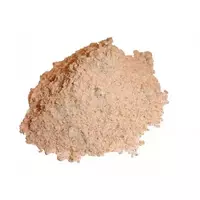Cage rye flour

Back in the old days, Russian people believed that when rye is eaten, the body strengthens, the vital tone increases and the mood rises. And indeed, unrefined simple food helped our ancestors stay energetic and keep working throughout the day. Even today, people are increasingly thinking about making food not only tasty, but also healthy. Rye cage flour is just such a product.
In the production of rye upholstery flour, whole grain is used, which during coarse grinding is converted into large particles, cell shells and bran. The color of such flour is quite dark - gray with a brownish tint. By the way, the content of bran particles in this variety of rye flour is the highest.
Despite the fact that in terms of bakery properties, cage rye flour is inferior to wheat flour, but it is characterized by significantly greater nutritional value. In cooking, this most common rye flour variety is used mainly in table breads.
In terms of biological value, cage rye flour is 3 times higher than wheat flour in terms of potassium, magnesium and iron content. Thanks to the large number of grain elements, regular consumption of products from this type of flour improves metabolism, normalizes the functioning of the heart and gastrointestinal tract, and also reduces cholesterol.
rye square flour 294 kCal
Energy value of rye cage flour (Ratio of proteins, fats, carbohydrates - ju):
Proteins: 10.7 g (~ 43 kCal)
Fats: 1.9 g (~ 17 kCal)
Carbohydrates: 58.5g (~ 234 kCal)
Energy ratio (bj | y): 15% | 6% | 80%
 Español
Español Français
Français Português
Português Русский
Русский 简体中文
简体中文 繁體中文
繁體中文 日本語
日本語 한국어
한국어 العربية
العربية Türkçe
Türkçe Қазақ
Қазақ Deutsch
Deutsch Italiano
Italiano Українська
Українська
